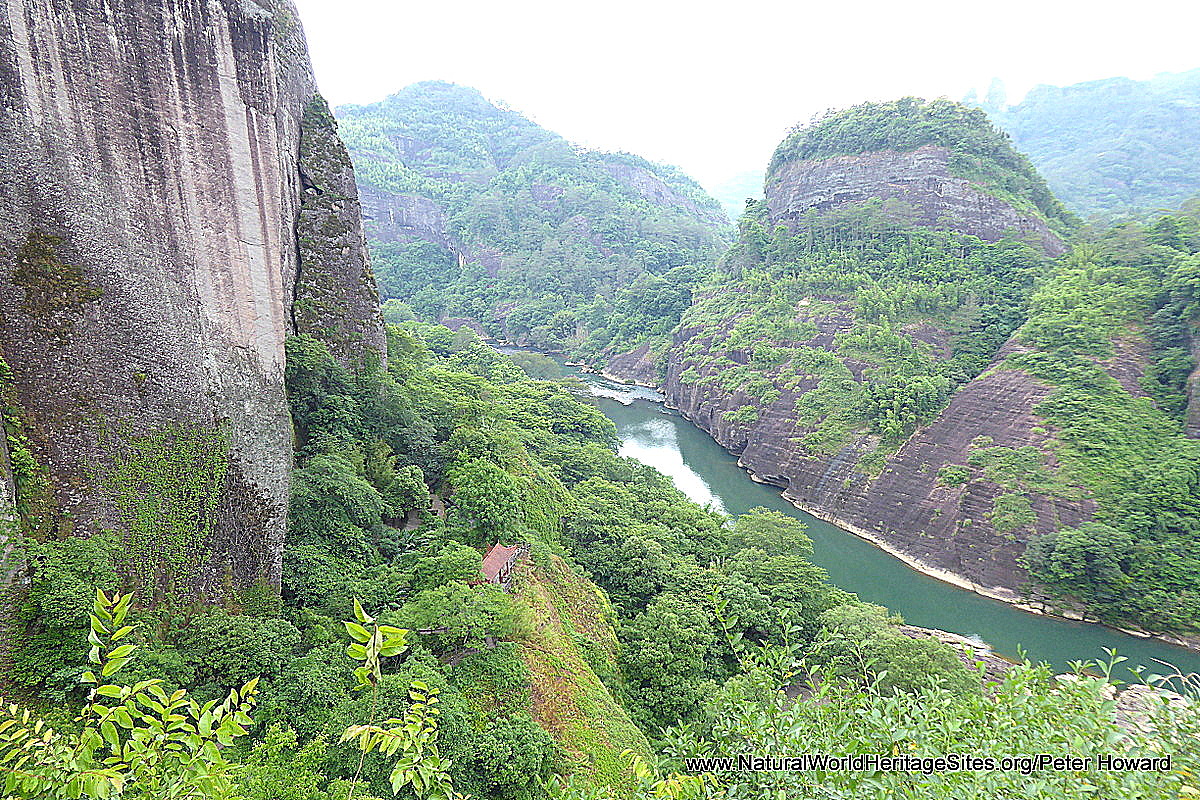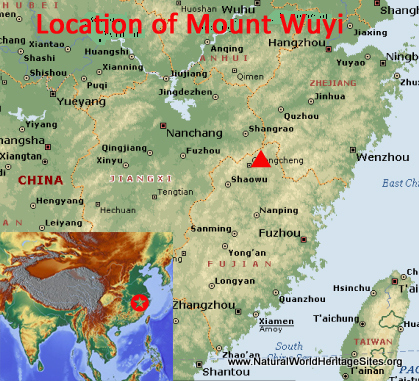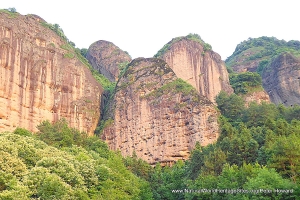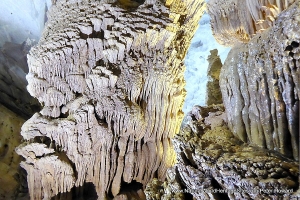EXPLORE CHINA’S MOUNT WUYI with this slideshow, check the location map and get all the facts and information below.
For slideshow description see right or scroll down (mobile). Click to view slideshow
Location and Values: Mount Wuyi (or Wuyishan) is an extensive area of tropical and sub-tropical forest in China’s south-eastern Fujian Province that is outstandingly important for biodiversity conservation. It is especially important for plants, with a large number of relict species including many endemic to China and rare in other parts of the country. In addition, part of the site (designated as the Wuyishan National Scenic Area, 70km 2 ) is scenically spectacular with red sandstone cliffs and monoliths flanking the gorge of the Nine-Bend Stream (a landscape that is more widely represented on the world heritage list by the serial site known as ‘China Danxia’). The scenic area around the Nine-Bend Stream has served as an important cultural centre for at least two thousand years, and the remains of numerous temples and monasteries remain as testament to Confucian and Taoist traditions. A separate archaeological site, 15km to the southeast of the main site (not open to the public), protects the remains of a large administrative capital from the 1 st century B.C. Han Dynasty.
Conservation Status and Prospects. According to IUCN’s Conservation Outlook Assessment (2014) the conservation status of this site is ‘good, with some concerns’. The IUCN report notes that ‘its values and attributes are in good condition but there are several pressures or threats, including extensive modification of habitats to produce mao bamboo over about 30% of the site area, localized impacts of domestic and agricultural pollution. Tourism infrastructure development is satisfactory at present but continuing growth creates a growing threat. The property enjoys adequate protection and the management regime is moderately effective with adequate administrative framework and comprehensive management plans. Staff capacity could be increased. The small size of the site within Fujian leave it vulnerable to climate change and not really preserving the full range of biodiversity, as much of the best natural habitat is outside the site in adjacent Jiangxi.’
Links:
Google Earth
Official UNESCO Site Details
IUCN Conservation Outlook
UNEP-WCMC Site Description
Slideshow description
The slideshow is intended to ‘tell the story’ of Mount Wuyi, and features a portfolio of photos from a visit by Peter Howard in May 2017. The slideshow includes three main visitor attractions – a trip by bamboo raft through the core of the ‘scenic area’ along the Nine Bend Stream; a hike to various vantage points in the highest parts of the ‘scenic area’, and a road trip into the forested interior of the site. The slideshow begins with the bamboo raft trip, showing the scenery and vegetation along the route, including the remains of ‘wooden boat coffins’ lodged into crevices high in the sandstone cliffs. There is a small museum next to the Wuyi Palace which provides some information on areas of the site that are not open to the public and its biodiversity values, so a few photos of these exhibits are included. From the museum the slideshow includes photos of the vegetation, views, temples and rock inscriptions that can be seen elsewhere in the scenic area, including the steep climbs to Great King Peak and the Heavenly Tour Peak. Tea is grown extensively in this part of China and many small tea plantations are integrated into the landscape, occupying valley bottoms throughout the scenic area. Most of the protected forest within the interior of the world heritage site is under strict protection and public access is prohibited, but three or four ‘scenic spots’ have been developed along the only road that penetrates the forest interior. These are located about 15-20 km from the west entrance of the National Scenic Area, and include short walking trails past waterfalls (e.g. at Longchuan Gorge), and some facilities for ‘adventure’ sport activities, as shown. A small animal ‘exhibit’ with stuffed animals and a few small cages with wild boar, monkeys and birds hint at the possible wildlife values of the surrounding forests, but better interpretation of the international importance of the site for biodiversity would clearly be beneficial.
Factfile
Website Categories: Mountains; Tropical & Sub-tropical Forests; Temperate & Boreal Forests
Area: 1,000 km2
Inscribed: 1999
Criteria:
- Outstanding natural beauty (vii);
- Natural habitat for biodiversity (x);
- Significant number of rare, endemic and/or endangered species (x); cultural criteria (iii,vi)





